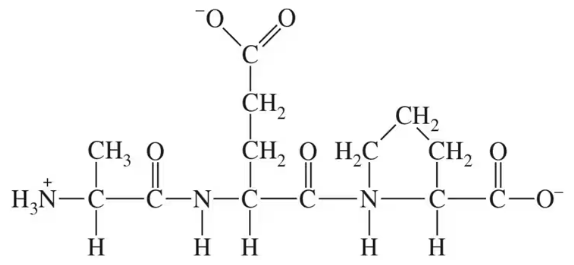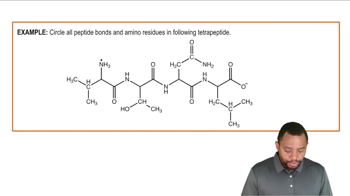Peptides from sweet potato with antioxidant properties have the following sequence of amino acids. Draw the structure for each peptide and write the one-letter abbreviations.
b. Asn–Tyr–Asp–Glu–Tyr

 Verified step by step guidance
Verified step by step guidance Verified video answer for a similar problem:
Verified video answer for a similar problem:

